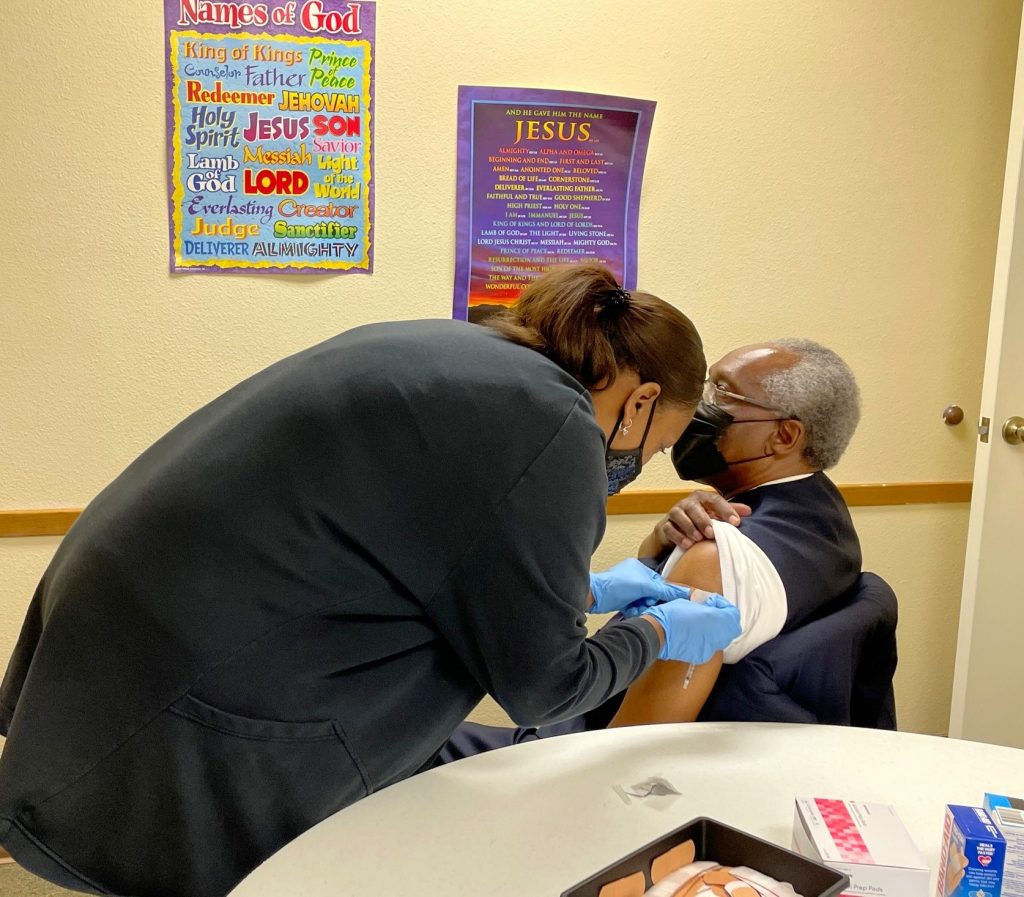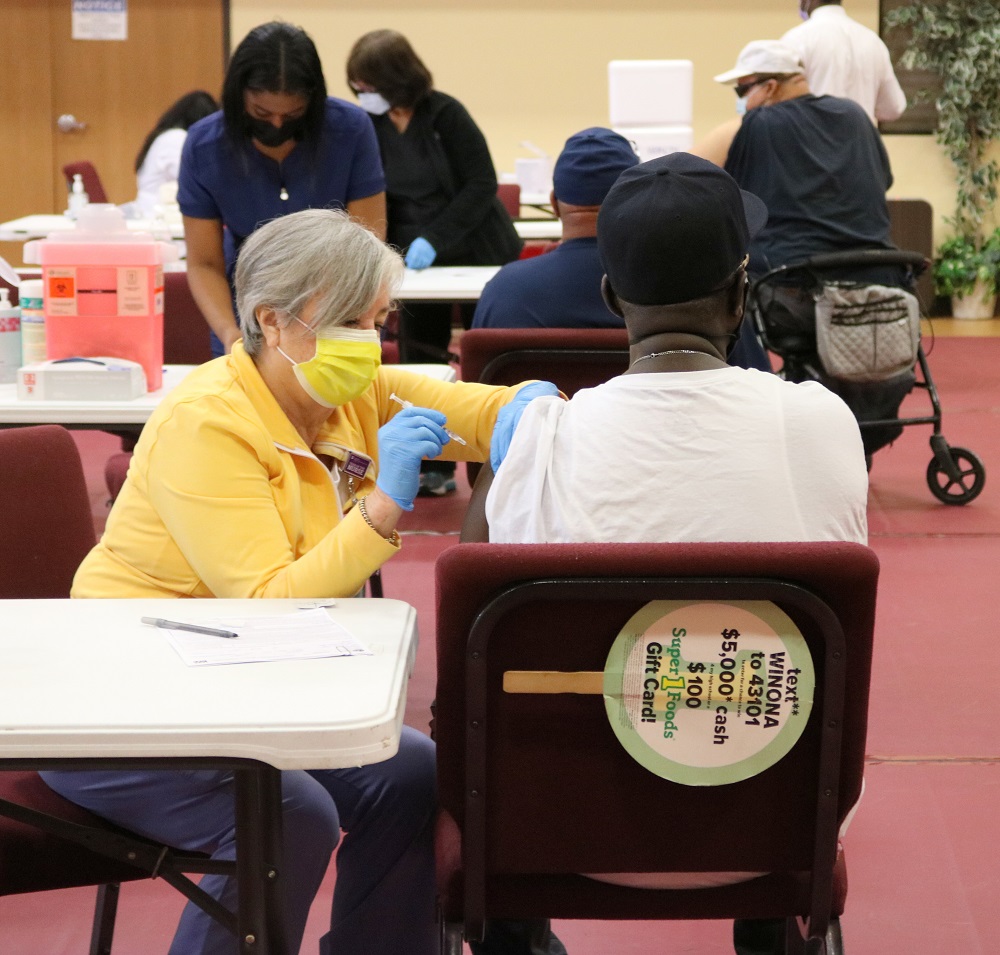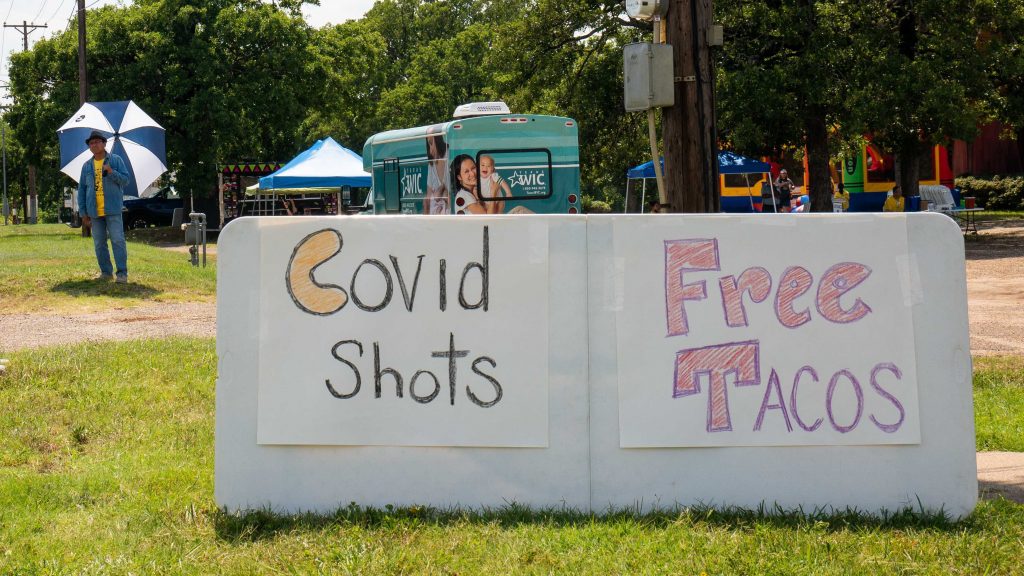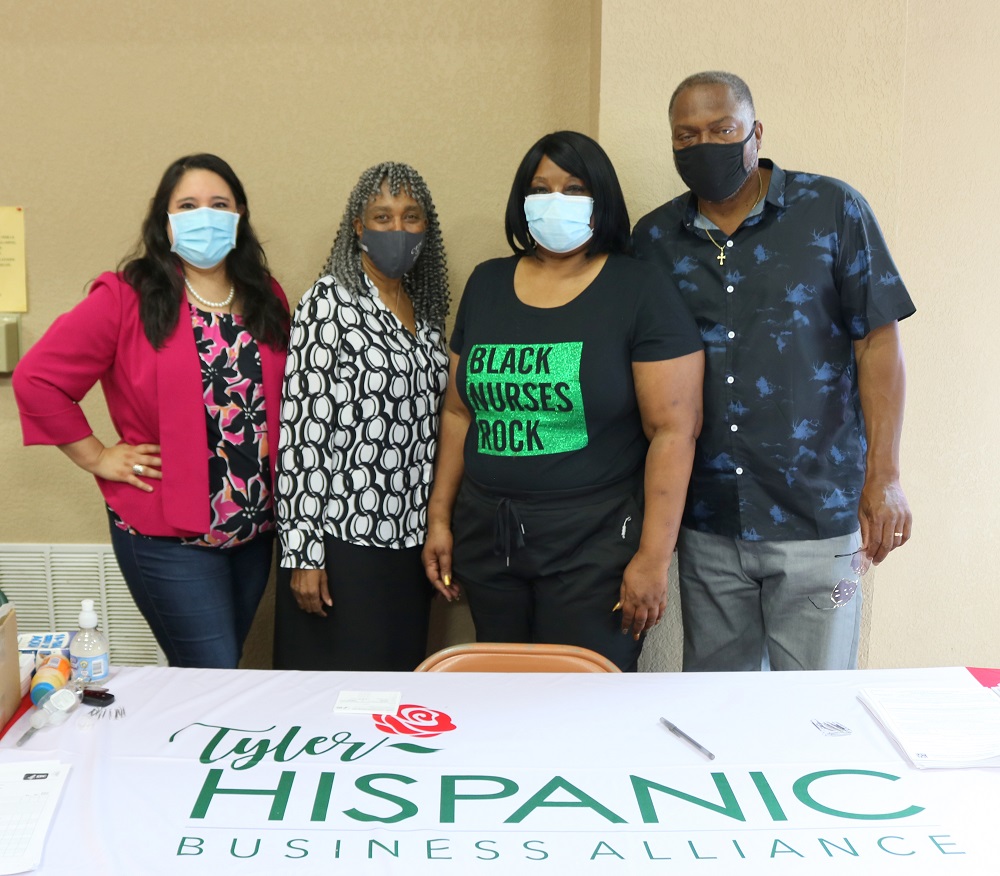Public health authorities say the COVID era may be far from over in East Texas, judging by current vaccination rates.
Texas Department of State Health Services data reports just under 37% of Smith County residents have reached full vaccination status, well below the estimated 70%-90% required to reach herd immunity according to the CDC.
At the same time, shots per day are drastically falling in Smith and surrounding counties at mass vaccination locations like Harvey Hall.
Now officials are counting on a tried-and-true way to reach East Texas communities: churches.
“We were seeing vulnerable populations, minority populations and the elderly having a hard time getting [vaccines] in the Northeast Texas Public Health District by no fault of their own,” Derrick Choice, community health program manager for DSHS region 4 and 5, said.

“Well, we reached out to the faith-based community. It was welcomed in these communities and neighborhoods when they could go to the church facilities they attend on Sundays and Wednesdays to get vaccinated for COVID-19.”
So far, NETHealth CEO George Roberts estimates that, out of the 70,000 vaccine doses given by his organization, over 3,500 have gone to churches.
The push for more vaccinations within religious congregations reflects ongoing regional and national efforts to establish trust in COVID-19 vaccines, especially among minority communities where vaccine rates consistently lag behind their white counterparts.

Most Tyler churches distributing vaccines specifically serve Hispanic or Black populations, like St. Peter Claver Catholic Church or St. Louis and Sunshine Baptist churches.
“There was this idea that the minority community wouldn’t take the shot,” St. Louis Baptist Church pastor Rev. Ralph Caraway said. “The effort that we were making was to prove that people would take the vaccine if you gave them a comfortable situation to take it in that they trusted. They trusted the church.”
Caraway’s church has hosted multiple vaccine clinics since doses became widely available in East Texas, drawing hundreds of visitors from both inside and outside the mostly Black St. Louis congregation.
St. Louis’ clinic quelled its congregants’ fears through its familiar location and sign up process. Visitors applied for their doses by phone — not online — so those with less access or experience with technology could easily navigate the process.
St. Peter Claver, a largely Hispanic congregation, adopted a similar offline sign up strategy for their church clinic to reach not only the elderly but to bridge language barriers as well.
“We had tons of volunteers, and all of the volunteers were bilingual,” St. Peter congregant April Munoz said. “No matter your language level, no matter your literacy level, you knew that you could show up and someone would fill out the form for you if you needed that. Someone could explain to you in your language, the questions on the form.”
Munoz, who helped pitch the idea of a church vaccine clinic to St. Peter clergy, said many of the around 450 visitors to their clinics came from outside their congregation and the Catholic faith.
Their clinic remained open past 5 p.m. to draw in more working families who otherwise couldn’t schedule a vaccine appointment anywhere else.

Tyler-area pastor Karen Jones of Cedar Street United Methodist Church incorporated these tactics and more in a vaccination event targeting the Hispanic community sponsored by her nonprofit, the East Texas Immigrant Advocacy and Resource Center.
Dozens of people, many of whom came with family members, received their vaccination at the IARC on Juneteenth and Father’s Day weekend, along with free tacos, drinks and bouncy houses. Volunteers, many of whom were bilingual, vaccinated visitors from 1 p.m. to 7 p.m., but Jones said turnout was still behind the organizers’ expectations.
“We’re going to take all the information from this event and tweak it,” Jones said. “I think a lot of what we’re going to need to do is contact business folks that would have a higher percentage of workers in construction and things like that, and encourage them to tell their folks they need to come.”
Despite successes with church clinics, state health data shows minority communities are still lagging behind average local vaccination rates.
The four Tyler ZIP codes with the lowest vaccination rates as of June 2021 are 75706, 75702, 75708 and 75705, according to state data compiled by KLTV. US Census data from 2010 shows those ZIPs also have the highest minority populations in the city and rank among the five lowest income areas when compared to the median.
Meanwhile, Tyler ZIP codes 75701, 75703, 75707 and 75709 compose the top four ZIP codes in vaccination rates, white population and median income.
Vaccine rates by Tyler ZIP, race and income
| ZIP | Vaccination Rate | Race info | Median Income |
| 75701 | 28.86 fully | 17% Hispanic, 24% Black, 57% white, 1% Asian | 47,543 |
| 75702 | 21.67 fully | 46% Hispanic, 41% Black, 12% white | 37,345 |
| 75703 | 27.58 fully | 7% Hispanic, 14% Black, 75% white, 4% Asian | 62,544 |
| 75704 | 25.17 fully | 26% Hispanic, 22% Black, 50% white | 39,959 |
| 75705 | 23.35 fully | 14% Hispanic, 30% white, 54% Black, 1% Native American | 40,065 |
| 75706 | 21.33 fully | 41% Hispanic, 18% Black, 40% white | 49,982 |
| 75707 | 37.53 fully | 10% Hispanic, 8% Black, 80% white, 2% Asian | 74,077 |
| 75708 | 21.69 fully | 41% Hispanic, 16% Black, 42% white | 43,056 |
| 75709 | 38.87 fully | 12% Hispanic, 31% Black, 54% white, 1% Asian | $62,682 |
Churches can fight vaccine hesitation by dispelling rumors and giving congregants an easier sign up process, but in some cases public health workers and community organizers are battling against a prejudiced past.
Infamous medical trials from previous decades like the Tuskegee Experiment, which infected hundreds of Black men with syphilis without their knowledge from 1932 to 1972, have marred minority relationships with public health and medical research, Choice said.
Churches have risen to meet that history through public health educational events and partnerships with organizations like DSHS and NETHealth. For many minority-serving churches in East Texas, COVID-19 is just one of many public health issues to discuss with congregants.
“Obesity and diabetes are prevalent in the African American and Hispanic communities,” Choice said. “For the last seven years, [DSHS has] done the Tyler Faith Walk, and we target the African American community because of sedentary lifestyles, obesity and diabetes. We have reached out to pastors and made it a competition. We had a database of those African American churches we worked with in the past on the walk.”
Even longtime healthcare workers like JoAnn Hampton, the Smith County Precinct 4 commissioner and former health researcher, understand and express their hesitation about vaccine development.
“Working in health care for 30 years or more, I see the need for vaccinations,” Hampton said. “Did I have doubt? Yes. Was I worried about the clinical trial and the fact that it didn’t go two or three years down the road before they said, ‘Hey, this vaccine is ready to be given? Yes. But I’ve also seen people die. When you can see that the benefit [of vaccines] will save someone’s life, you want to do it.”
Hampton had a hand in organizing many of Tyler’s church vaccine clinics, like one she attended at Sunshine Missionary Baptist Church last month that drew a few dozen people from rural areas outside the city. She said church clinic vaccination rates are falling , but building trust in vaccines is still imperative.
With more vaccine distribution to minors 12 and over, pop-up clinics may move toward school and youth-oriented events, as long as community members trust vaccines enough to take them.
“You want to find a way that you can stop this hurt that’s going on within our families,” Hampton said. “The only way to do it is for all of us to get vaccinated and get that herd immunity.”
Love what you're seeing in our posts? Help power our local, nonprofit journalism platform — from in-depth reads, to freelance training, to COVID Stories videos, to intimate portraits of East Texans through storytelling.
Our readers have told us they want to better understand this place we all call home, from Tyler's north-south divide to our city's changing demographics. What systemic issues need attention? What are are greatest concerns and hopes? What matters most to Tylerites and East Texans?
Help us create more informed, more connected, more engaged Tyler. Help us continue providing no paywall, free access posts. Become a member today. Your $15/month contribution drives our work.









